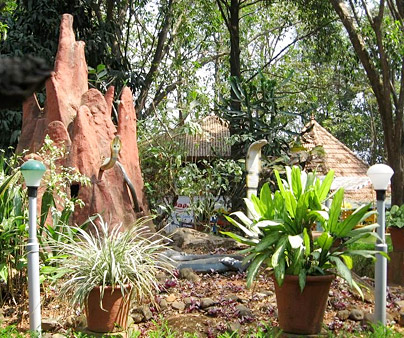 The Parassinkkadavu Snake Park is nearly sixteen kilometers from Kannur in the Kannur district of north Kerela. The Snake Park was set up by Visha Chikista Kendra at Pappiniseri and is a major attraction for foreigners and tourist alike.
The Parassinkkadavu Snake Park is nearly sixteen kilometers from Kannur in the Kannur district of north Kerela. The Snake Park was set up by Visha Chikista Kendra at Pappiniseri and is a major attraction for foreigners and tourist alike.
The snake park has nearly one hundred and fifty varieties of snake which includes Spectacled Cobra, King Cobra,Russell`s viper, Krait and various pit vipers. The park also provides shelter to a large variety of non poisonous snakes including pythons. The aim of the park is to preserve and conserve snakes many species which are on the verge of extinction. The Parassinkkadavu Snake Park is easily accessible. The nearest airport is the Karipur International Airport and the nearest railway station is the Kannur Railway Station.



















